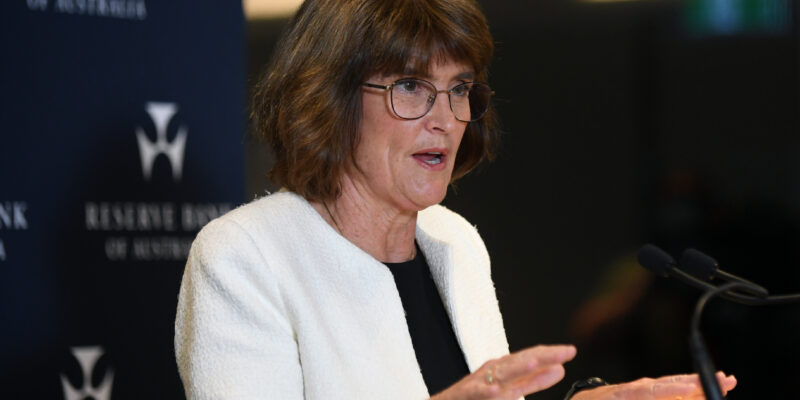3 Key Reasons Why Conveyancing Pricing Models Are Unsustainable
Real estate lawyer Nadine Wismayer is one practitioner pushing back against race to the bottom trend that is plaguing conveyancing.

REAL estate lawyers in residential conveyancing face a growing tension that could make or break their businesses.
On the one hand, they help clients through one of their most significant financial decisions in a complex and highly regulated area of law.
However, multiple factors have created a trend of low fixed fees that do not realistically allow a real estate lawyer to provide their client with a level of service the profession should be aiming for.
Nadine Wismayer, founder of The Real Estate Lawyer, is one practitioner pushing back against this dangerous trend.
“Fixed fees as low as $550.00 for purchases or $400.00 for sales simply don’t allow solicitors to give our clients the level of diligence and attention they deserve,” says Nadine.
While there are many intricacies and market forces at play when it comes to this “race to the bottom”, Nadine says that three primary factors make current pricing models unsustainable:
*the inappropriate interventions of real estate agents,
*the exclusion of common events from fixed fee terms
*and the work being done by underqualified staff.
“Real estate agents’ primary aim is to finalise contracts swiftly,” Nadine observes.
“In their haste, they frequently urge hurried signing, insert potentially harmful special conditions, deter legal consultation and meddle in the conveyancing process post-agreement.”
Because, oddly, real estate agents so often control the contracting process, issues that could have been spotted and addressed before the contract was signed are ignored, leaving the consumer to deal with the fallout, according to Nadine.
Their lawyers at this point are bound to deal with the contract they signed, and unfortunately it is often too late to help.
Moreover, agents insisting that they be sent or copied on all correspondence ignore concepts of legal professional privilege and fail to understand that their regular interventions often just serve to increase the cost and complexity of the situation.
As for fixed fee terms, “the reality is that to charge a minimal fixed fee for a conveyance you have to limit the scope of your work to the absolute bare minimum,” says Nadine.
Common events like extensions of time, negotiations on building and pest reports, or potential disputes about disclosures or particulars of the property are often well outside what the limited fixed fee service will deal with.
“So, what happens to those clients if an issue arises? As often as not the ultra-low-cost fixed fee firm simply sends the consumer away if they are faced with an issue falling outside their low fixed fee scope, because that kind of service isn’t within either their expertise or their fee structure.”
So where has this led? Unfortunately, to achieve a lower cost of service in order to try and sustain low fees, many real estate lawyers utilise unqualified or underqualified staff to do the work.
This is creating an increasingly blurred line between conveyancers and real estate lawyers in states like Queensland, where only lawyers can undertake the conveyancing process (but extraordinarily not the contract drafting process).
However, to compete on price, many firms seem to have little choice but to participate in the race to the bottom with lower and lower fees, and less and less service offered.
Do these issues have real world impact? Nadine recounts one example: a client who was contracted to buy a five-bedroom home later found out that the fifth bedroom was, in fact, a garage.
The original lawyer on a fixed-fee arrangement told the client they had no choice but to complete the purchase.
Nadine’s firm was engaged and stepped in, considered the facts at hand, and successfully negotiated a contract withdrawal, saving the client hundreds of thousands of dollars. “If we had charged the same rock-bottom rates as the first lawyer, we wouldn’t have had the time or resources to deliver that outcome.”
But is this how it has to be? Nadine thinks not, and emphasises, “It’s time for real estate lawyers to stand firm. Our fees need to reflect the time and expertise required to properly guide clients before they enter into the contract and then during the contractual period. If we don’t, both the industry and our clients, the consumers, will continue to suffer.”
In Queensland there is an opportunity now for real estate lawyers to level the playing field, with the introduction of the new Property Law Act which comes into force in 2025.
“The changes fell short in that they didn’t address the drafting of contracts by real estate agents like our southern counterparts. However, I believe that, given the potential complexity and risk for non-compliance in the new legislative disclosure regime for agents, real estate lawyers will (most likely) once again be in control of drafting contracts. Perhaps this will also give real estate law firms the chance they need to seriously consider moving past a business based solely on fee competition and into a true service model.”
As the property law sector grapples with these challenges, it remains to be seen how firms will balance competitive pricing with the need to deliver a thorough, professional service. But one thing is clear: real estate lawyers like Nadine Wismayer are not willing to compromise the integrity of their work in the name of undercutting the competition.
Nadine Wismayer founded The Real Estate Lawyer in 2016. Since then, her firm has established itself as a leading name in real estate law, driven by a commitment to delivering exceptional results for their clients. Nadine and her team provide top-tier legal services, concentrating in all aspects of real estate transactions.




